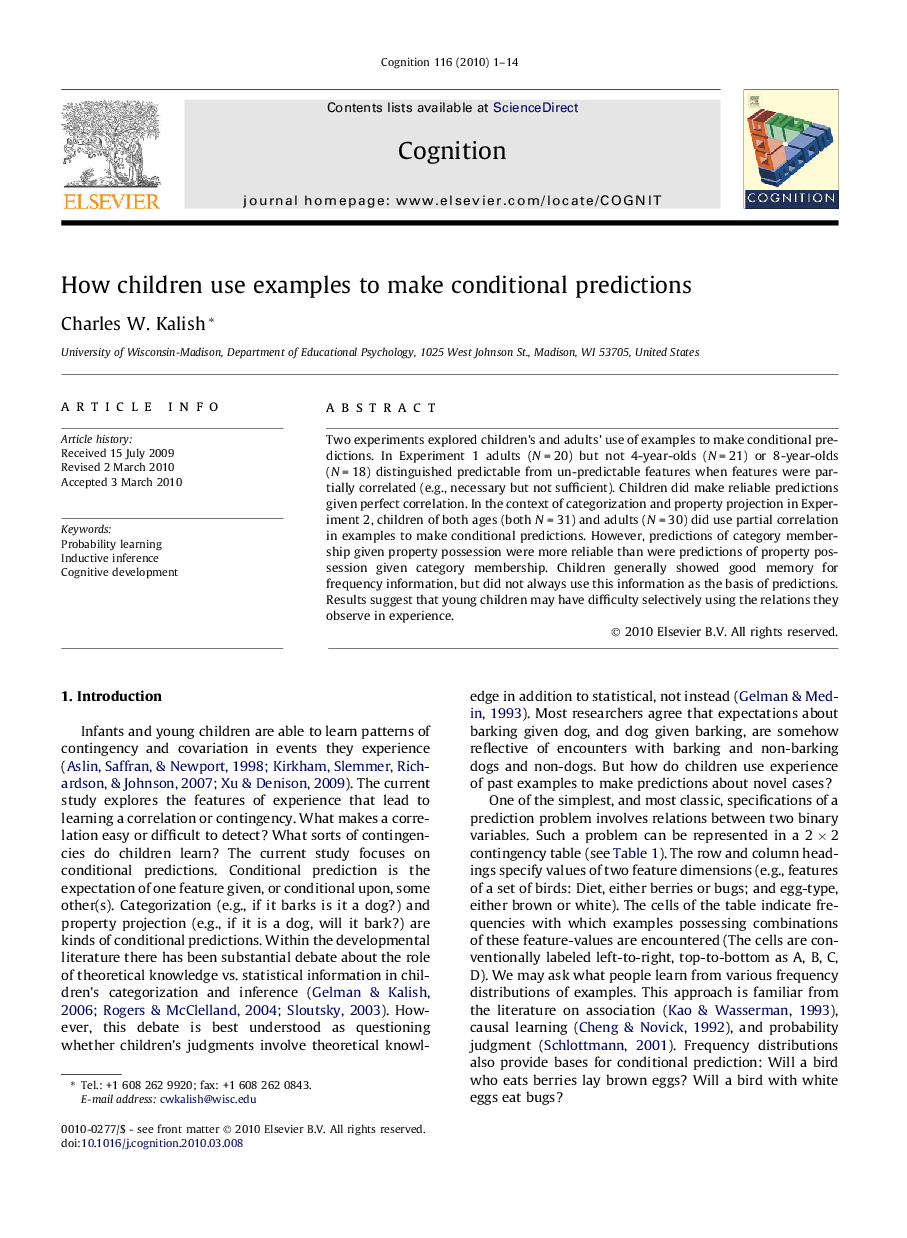| کد مقاله | کد نشریه | سال انتشار | مقاله انگلیسی | نسخه تمام متن |
|---|---|---|---|---|
| 926971 | 921924 | 2010 | 14 صفحه PDF | دانلود رایگان |

Two experiments explored children’s and adults’ use of examples to make conditional predictions. In Experiment 1 adults (N = 20) but not 4-year-olds (N = 21) or 8-year-olds (N = 18) distinguished predictable from un-predictable features when features were partially correlated (e.g., necessary but not sufficient). Children did make reliable predictions given perfect correlation. In the context of categorization and property projection in Experiment 2, children of both ages (both N = 31) and adults (N = 30) did use partial correlation in examples to make conditional predictions. However, predictions of category membership given property possession were more reliable than were predictions of property possession given category membership. Children generally showed good memory for frequency information, but did not always use this information as the basis of predictions. Results suggest that young children may have difficulty selectively using the relations they observe in experience.
Journal: Cognition - Volume 116, Issue 1, July 2010, Pages 1–14